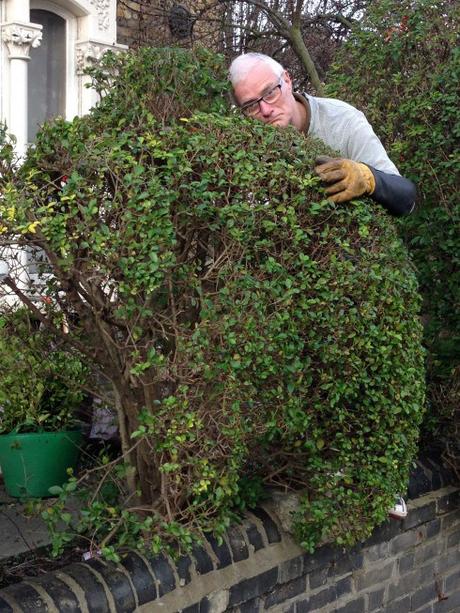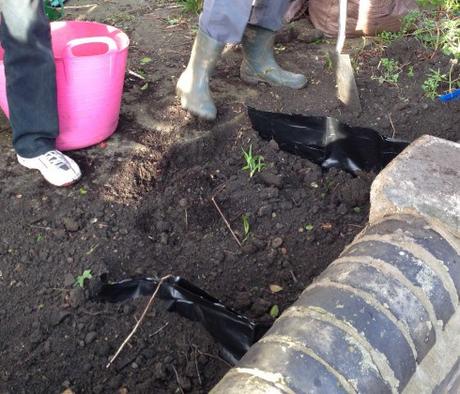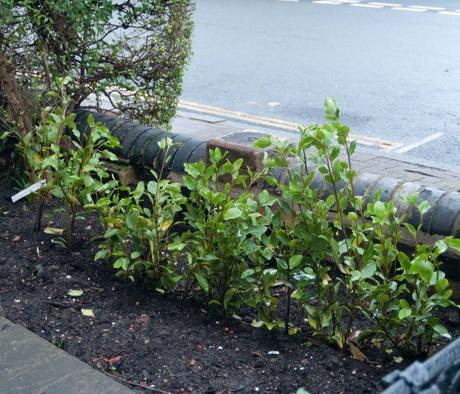 Here’s Tim. Topiary Tim. He’s looking a bit sad. One of our elephants has had to go.
Here’s Tim. Topiary Tim. He’s looking a bit sad. One of our elephants has had to go.

At first we were in a state of denial. Maybe somebody had poured some nasty chemicals on the ground or perhaps wandered past with a flame thrower? But who were we kidding. We dug up roots of the wilting/dead trunk and ears, and our worst suspicions were confirmed. White fungus was clearly visible between the bark and wood.
Unfortunately, there is no cure for Honey Fungus. On the RHS website it says, ‘the only effective remedy is to excavate and destroy, by burning or landfill, all of the infected root and stump material. This will destroy the food base on which the rhizomorphs (brown root-like cords) feed and they are unable to grow in the soil when detached from infected material.’


As a belt and braces approach, we’ve also added a couple of pond liner barriers to roughly 18inches deep as this should block any remaining rhizomorphs, which look like bootlaces apparently. We haven’t noticed any of these, but they could easily be confused with roots. I’ve also checked with the RHS about removing the soil around the affected area and they say that the soil doesn’t have to be removed. Hugely relieved as this could be a mammoth (ha, ha) task, but we’ve added plenty of rich garden compost for the new plants.

It would be unwise to plant privet again, as it is so susceptible to Honey Fungus, so we checked with the RHS list on which evergreens are less likely to be affected. Tim’s plumped for some (fast growing) Griselenia littoralis. This has much bigger and brighter green leaves than the privet, but should be an interesting addition to our topiary hedge.

We also plan on giving the rest of the herd a good old feed and mulch come spring, so that the elephants are fighting fit for the years ahead. Here’s hoping we’ve caught the fungus in time….
